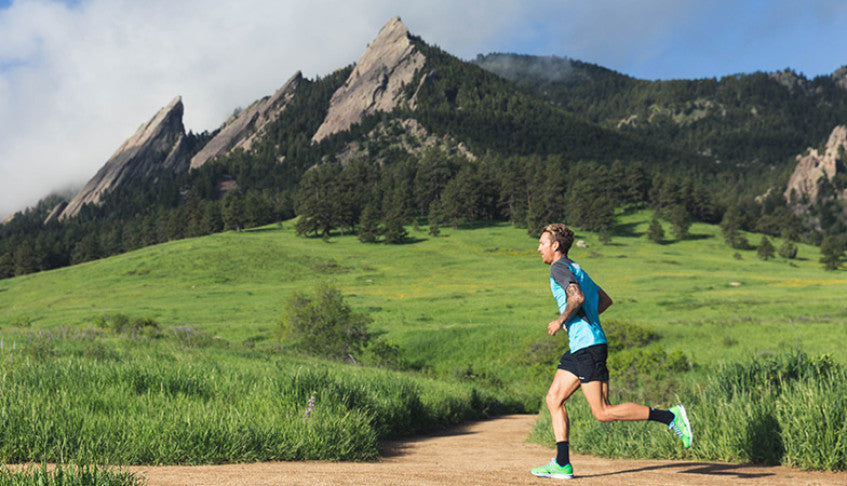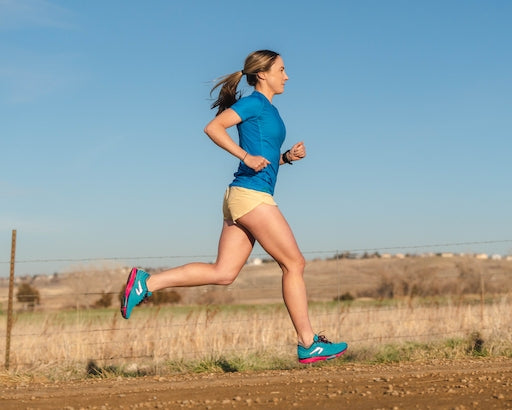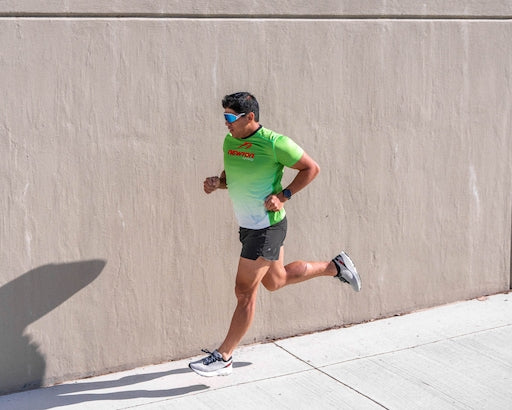
Triathlon Tip #3
at the races education fitness newton running athletes27 May 2016
Thinking about taking on a full or 70.3 Ironman Race, but don’t know how to train? We’ve compiled expert advice from Newton Running's professional athletes to let you in on their training tips. We cover everything from how to eat right while on the road, how to get the most out of tempo runs and how to improve your bike to run transition. Training shouldn’t feel like a chore, so get the most out of your training and have fun!
Running Off The Bike – Tim Van Berkel; Professional Triathlete
No matter which way you slice it or dice it, running off the bike is tough! Whether you’re an age-grouper or an elite athlete, you’re going to face some challenges when you make the transition from riding to running. As you’ll discover, there are actually some physiological and mental issues that make running after riding difficult. The good news is there are some very practical things you can do to minimize your discomfort, as well as the inevitable drop in efficiency that comes at the start of the run leg. So… let’s get into it!
Why it’s tough to run off the bike
Unlike the ‘man ‘flu’, the issue of finding it difficult to run off the bike is real and well-documented. A recent French study found that 70% of elite triathletes ran up to 10% slower in the first 500-1000m of the run leg. Another study showed that transition-phase running is marked by greater oxygen consumption and higher breathing and heart rates. There’s no question about it – running economy is measurably lower after riding – that’s why it feels tougher. Less clear are the causes of this issue. Let me quickly go through some of the suggested explanations:
- Theory #1 -After hard cycling for anywhere between 40-180km, some experts argue that your legs are glycogen-depleted – hence the feeling of heaviness and unresponsiveness. Some also argue that it could be dehydration taking its toll as well. Both of these theories make sense, but they don’t explain why the issue usually sorts itself out after the first couple of kilometers.
- Theory #2 – When you begin the run your nervous system is still in ‘riding mode’. It takes a while for your brain to adjust to a whole new neuro-muscular coordination pattern. The fact is, everyone feels ‘un-co’ when they get off the bike and start running!
- Theory #3 – Different movement patterns engage different muscles in different ways, which requires a redistribution of blood from one set of muscles to another. Riding is a simpler activity as far as muscle activation goes – it primarily involves your quads and hamstrings. While these two muscles are obviously heavily used on the run leg, the overall muscular ‘equation’ is much more complicated. Running requires the coordination of a much larger number of muscles – add in your glutes, hip flexors, abductors and core and upper body as well. That’s not surprising. Riding has a two-stage action, whereas running involves a more complex four-stage action. The short version is – it takes a little while for the blood flow to adjust – getting sufficient oxygen to the muscles that need it and dealing with the lactic acid build-up in the now less-active muscles.
How to maximize your off the bike performance
So, if the problem is real – the question, as always, is how do we overcome it? Here are my top seven tips for dealing with ‘off the bike syndrome’:
- Practice, practice, practice! Whether you decide to do a ‘brick’ – a full bike session followed by a full run session – or a shorter ‘transition run’ – a full bike session followed by a short run (10-20 mins), in either case you’re conditioning your muscles and your nervous system to cope better with the bike-run transition. Research shows that elite athletes adapt more rapidly that age-group athletes when they run off the bike. My guess is that’s simply because we practice that transition more often and so our bodies get better at adjusting to the change. Whatever your level of ability, practicing the transition will make a huge difference.
- Lighten the gears slightly as you get towards the end of the bike leg. Give your legs a chance to recover before you have to run – you can save a little energy and gain some ‘fresh legs’ without making major sacrifices of time.
- While we’re talking bike legs – the bike leg should be your very own ‘rolling buffet’. One way to minimize the dangers of glycogen depletion and dehydration is to make sure you eat and drink sufficiently on the bike. Have a clear plan and know how many grams and mils you need to consume to set yourself up for the run.
- Don’t go out too hard at the start of the run leg. When I get out of T2 my one aim is to ‘find my rhythm’. My focus is inward – I want to find that ‘sweet spot’ where my running feels fluid and strong. I’m not thinking about chasing, I just want to find my groove. That leads me to my next point…
- Concentrate on your running style. If you watch runners come out of T2 closely, you’ll notice that many of them are running with a more stooped, body-forward posture. That could be caused by fatigue or from the bike to run adjustment. Either way, it’s not an efficient running posture. Concentrate on staying upright, engaging the glutes, relaxing the upper body and stretching your legs out.
Think ‘relaxed and floating’ rather than ‘Hunchback of Notre Dame’. - Run with a watch such as a Garmin (including Heart Rate Monitor) so that you can get a realistic idea of pacing – based on hard data, not on ‘feel’. As my coach, Dr Dan says, “The numbers don’t lie”. You can use the data collected for later analysis too.
- Practice your T2 transition. This is one place where valuable time can be made or lost and it’s one advantage you can give yourself that has nothing to do with fitness – it’s about technique and practice.
Final thoughts
Running off the bike can be tough, but the good thing is – it’s tough for everyone. That means that if you can get a handle on the issue and work at minimizing its impact using the tips we’ve discussed, you will have a definite edge over your competitors. That first couple of kilometers out of T2 can set you up for the rest of the race and time shaved there can have a huge impact on your final result. That’s not a bad tip to finish with – if you can take a difficulty and turn it into an opportunity, then you’re one big step closer to success. And that’s not just true for triathlon, that’s true for life!

